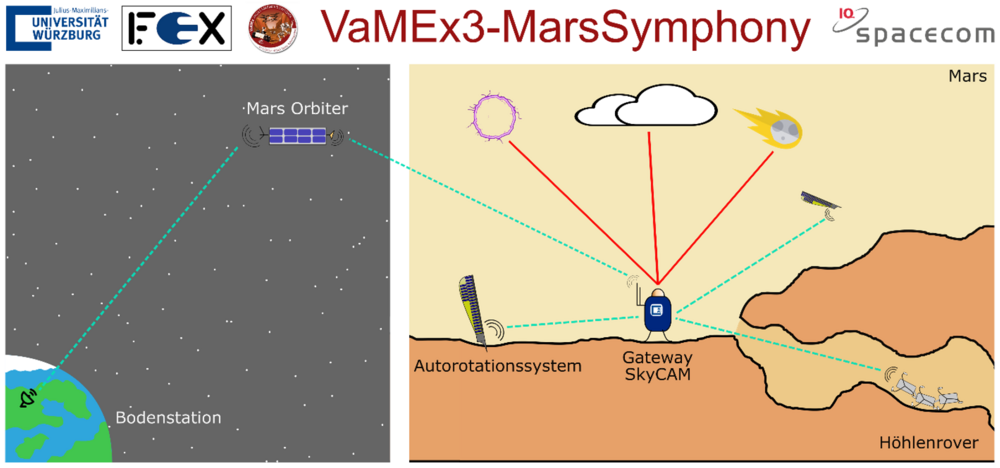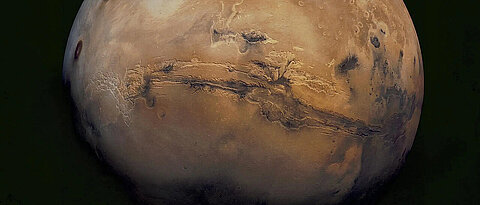In the context of VaMEx3, the MarsSymphony project aims to simulate a realistic exploration scenario for Mars, in which a ground-based rover is used in a realistic analog mission for cave exploration. The overall objectives of the project include the development and implementation of innovative communication technologies, in particular the integration of a stationary gateway to demonstrate and test solutions for challenges in non-line-of-sight (nLOS) communication between a rover and the space segment.
The integration of a camera system for sky observation on the gateway represents an important development step towards a detection system for short-term phenomena in the Martian atmosphere and for research into Unidentified Anomalous Phenomena (UAP). At the same time, the performance of the gateway's scheduling algorithms can be comprehensively demonstrated with this payload.
A network of distributed sensors also contributes to increase the scientific benefit. This network is carried to the ground by autorotation. As part of the field test scenario, the technologies will be tested under realistic conditions in order to gain insights for future space missions and advance the possibilities of interplanetary exploration.









